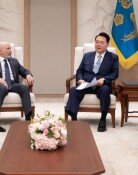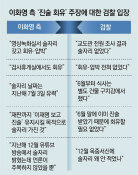U.S. opens possibilities of preemptive strike at N.K. nuclear facility
U.S. opens possibilities of preemptive strike at N.K. nuclear facility
Posted September. 24, 2016 07:45,
Updated September. 24, 2016 08:25
White House press secretary Josh Ernest said on Thursday, "Just in general, not specifically to North Korea, as an operational matter we're not going to discuss any preemptive military actions in advance.” The remark came as an answer to a question made during the regular briefing by a reporter if President Barack Obama has “any particular plans for the North Korea such as airstrikes. Though in theory, preemptive strikes are normally made without any notice, but it is quite uncommon for such comments to be heard during a White House briefing.
Intensive measures to deal a devastating blow to North Korea are currently put into action, as the public sentiment in the U.S. are increasingly questioning President Obama’s “strategic patience,” which came to a failure after Pyongyang pushed ahead its 5th nuclear test. The U.S. Department of State approved to inject 2.65 million dollars on three projects, such as higher level of psychological operations to bring down the reclusive regime. In addition, the U.S.-South Korean air forces will conduct a joint training operation designed to practice pinpoint strikes targeted to Yongbyon nuclear facility during the multinational “Red Flag” drill, which will take place next month in Alaska. To review sudden attack on nuclear and missile sites during nighttime in North Korea, F-15K fighters of the South Korean Airforce also conducted on Sept. 12 night its refueling exercise in the air with U.S. in-flight tankers stationed in Japan.
The U.S. officially opposed to arguments that South Korea should be armed with nuclear weapons and re-displace tactical nuclear weapons. Nevertheless, the White House is still opening the possibility of making preemptive strike against the North and changing the Kim Jong Un regime. On plans for a first-strike, former Joint Chiefs Chairman Adm. Michael Mullenalso mentioned as “one of various options.” Be it preemptive strike in face of an imminent war, or a preventive strike to remove threats of various cards the U.S. holds, Washington may take military actions to deactivate North Korean nuclear and uranium enrichment facilities in Yongbyon. The card will threaten Kim and force him to give up his nuclear ambitions.
During the first North Korean nuclear crisis in 1994, the U.S. reviewed its plan to strike Yongbyon as a “surgical measure.” However, the plan was cancelled as then South Korean President Kim Young-sam opposed it at the last minute due to concerns over a possible war. Nonetheless, military solution should no longer be treated as a taboo, as fundamental breakthrough is required to solve the North Korean nuclear issue, which escalated to a crisis incomparable to that in 1994. Pyongyang threatened the international society that it will leave Seoul into ashes and destroy the U.S. military stationed Guam. Still, Washington will not just sit on the fence as nuclear threats from North Korea stretch out to the Asian Pacific region where the U.S. Armed Forces are deployed. Therefore, closer coordination between South Korea and the U.S. is crucial once inevitable military actions are taken on North Korean nuclear facilities.
한기흥기자 eligius@donga.com







